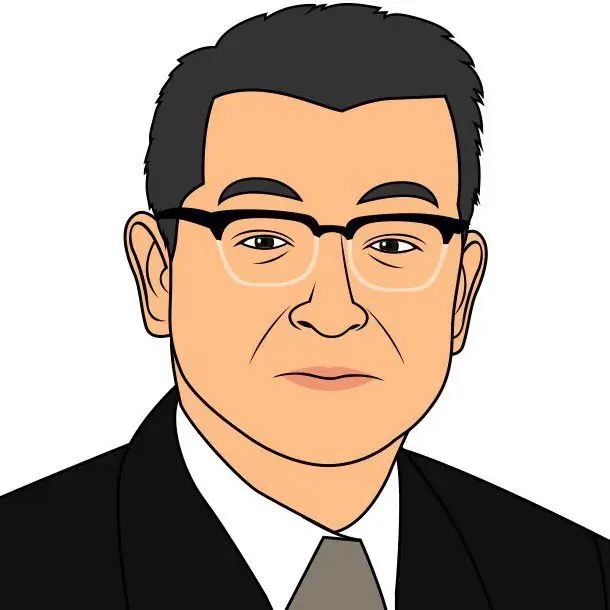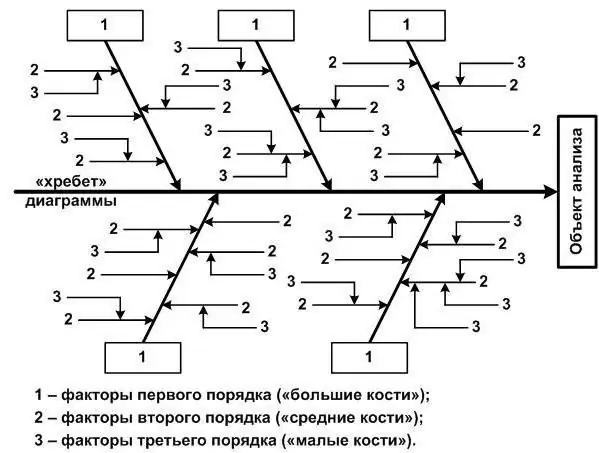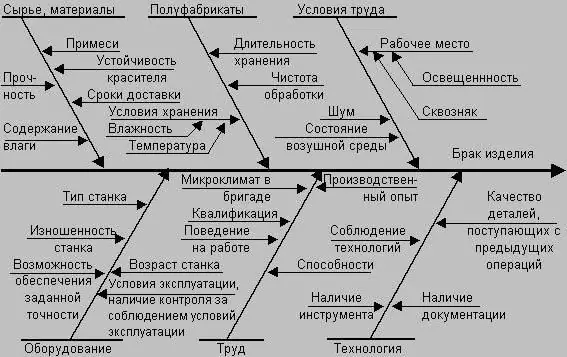The Ishikawa Chart is one of seven simple quality management tools. Using this method, you can find bottlenecks in the production process, determine their causes and consequences.
From history
K. Ishikawa was a Japanese quality researcher. In the middle of the twentieth century, he took up quality management methods and their active implementation in Japanese enterprises.
He proposed a new graphical quality management method called the cause-and-effect diagram or Ishikawa diagram, which is also called the "fish bone" or "fish skeleton".
This method, which belongs to a number of simple quality assurance tools, is known to everyone in Japan - from a schoolboy to a company president.

Initially, Ishikawa introduced the "six M" rule for his diagram (all words in English that cause production causes that lead to different results begin with the letter "M"): people (man), material (material), equipment (machine),method (method), management (management), measurement (measurement).
Today, the Ishikawa Cause-and-Effect Diagram is used not only for quality analysis, but also in other areas, and therefore the first-order causes may already be different.
Using the method
This method can be used to identify the causes of any problems, in order to analyze the business processes in the enterprise, if necessary, to assess the relationship of "cause-effect" relationships. As a rule, the Ishikawa diagram is born during a team discussion of a problem, carried out by the "brainstorming" method.
Classification of the causes that form the "skeleton" of the diagram

The Ishikawa diagram consists of a central vertical arrow, which actually represents the effect, and large "edges" approaching it, which are called first-order causes. Smaller arrows, called second-order causes, approach these "ribs", and even smaller ones - third-order causes - approach them. Such a "branching" can take a very long time, up to n-th order causes.
Using brainstorming to build a diagram
In order to build an Ishikawa diagram, you must first discuss with the team the existing problem and what are the most important factors affecting it.

The method of brainstorming or brainstorming suggests that in the discussionnot only employees of a certain enterprise participate, but other persons can also take part, since they have an "unscrupulous eye" and approach the solution of a problem from an unexpected angle.
If the first round of discussion fails to reach consensus on the causes of a particular effect, then as many rounds as needed to identify the underlying factors are held.
During the discussion, no ideas are discarded, they are all carefully recorded and processed.
Build order
Building an Ishikawa diagram involves several steps. The first is the correct formulation of the problem:
- It is written in the center of the sheet vertically and right-aligned horizontally. As a rule, the inscription is enclosed in a rectangle.
- First-order causes are brought to the problem-effect, which are also mainly placed in rectangles.
- First-order reasons point to second-order reasons, which in turn lead to third-order reasons, and so on up to the order that was determined during the brainstorm.

As a rule, the chart should have a title, date of compilation, object of study. In order to determine which reasons belong to the first order, and which ones belong to the second, etc., it is necessary to rank them, which can be carried out during brainstorming or using a mathematical apparatus.
Analysis of the causes of product defects
Let's consider the Ishikawa diagram using the example of the analysis of the causes of product defects.
In this case, a manufacturing defect acts as a consequence (problem).
During the brainstorming, various reasons were identified that affect the rejection of the product. As a result of reaching a consensus by the participants in the brainstorming, all reasons were ranked, insignificant ones were discarded and the most important factors were left.

First order reasons were materials, equipment, components, labour, working conditions and technology.
They are directly affected by second-order causes: impurities, humidity, delivery, accuracy, control, storage, air environment, workplace, production culture, age of the machine, service, discipline, qualification, experience, tool, measuring instruments, technological discipline, documentation, equipment (availability).
Second-order causes are influenced by third-order causes, which include temperature, storage humidity, inspection acceptance, lighting and noise in the workplace, and tooling quality.
All these reasons are placed in the appropriate places and the Ishikawa diagram is built. An example is shown in the figure. At the same time, you need to understand that the reasons for another group may be different.

Main question when plotting a chart
Any Ishikawa diagram should be accompanied by the question "Why?" when analyzing it. First, we ask this questionattitude to the problem: "Why did this problem arise?" Answering this question, it is possible to identify the causes of the first order. Next, ask the question "Why?" in relation to each of the causes of the first order and, thus, we identify the causes of the second order, etc. Also, they usually do not distinguish, but in relation to the causes of the third order and further, it is more correct to ask the question not “Why?”, but “What? " or "What exactly?"
By learning to answer these questions using the given examples of the Ishikawa diagram, you will learn how to build it yourself.
Dealing with the problem of "Dispersion in detail"
Let's consider Ishikawa diagrams using the example of an enterprise.
Industrial plant producing any parts often faces the problem of part size variation.
To solve this problem, it is necessary to gather technologists, workers, suppliers, managers, engineers, you can invite other people who will help find approaches that are not provided for by specialists in their field.
With a well-conducted analysis, it is not enough to identify only the factors causing the problem, they must be correctly ranked. This can be done during the brainstorming process, after the process of identifying the causes is completed. Each member of the group must rate the significance of individual causes from their point of view, after which the overall significance of the causes will be determined.

In the presentedIn the Ishikawa diagram, the following first-order causes were identified using the example of an enterprise: workers, materials, technology, machine, measurements, environment and management.
The figure shows second and third order causes. Asking questions "Why?" and what?" you can get to the root cause that created the problem.
Members of the group determined that the most significant indicators that affect the spread of details are the measurement period and the accuracy of the instruments.
Thus, the significance does not depend on what order the given reason belongs to.
Advantages and disadvantages of the method: continued research
Main advantages of the applied method:
- unleashing creativity;
- finding interdependencies between causes and effects, determining the significance of causes.
Main disadvantages when using this tool:
- no ability to check diagram in reverse order;
- A diagram can be made much more complex, making it difficult to read and draw conclusions logically.
In this regard, the analysis of causes and effects must be continued using other methods, first of all, such as A. Maslow's pyramid, Pareto chart, stratification method, control charts and others. For a simple solution, an analysis using a cause-and-effect diagram may be sufficient.
In closing
Ishikawa chart can be used primarily in quality managementproducts. In addition, it can be used in the design of new products, the modernization of production processes and in other cases. It can be built by one person or by a group of people after a preliminary discussion. As a result of using this tool in its activities, the enterprise gets the opportunity in a fairly simple form to systematize the causes of the problem-consequence under consideration, while selecting the most important ones and highlighting the priority ones among them by ranking.






